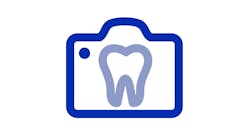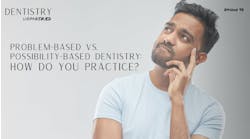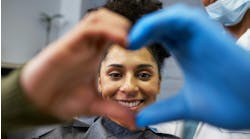by Joe Blaes, DDS
With approximately 30,000 new cases reported a year ago, oral cancer has developed into one of the most common forms of cancer. This month, DE® Editor Dr. Joe Blaes talks with St. Louis dentist, Dr. Jeffrey Dalin, about the role of dentists in the discovery of oral cancer as well as the components of a thorough oral cancer screening examination.
Dr. Blaes: Let’s have a little fun this month, Jeff. It is time to turn the tables on you. You have been doing the interviewing for the past year with your Dalin Exchange column. Now it is time for me to put you on the hot seat and make you the subject of an interview column. Discovering oral cancer has to be one of the most important functions of dentists and dental hygienists. Let’s talk about this key role.
Dr. Dalin: The latest statistics from 2005 estimate that approximately 30,000 new cases of oral cancer were diagnosed in the United States. This places oral cancer as the sixth most common cancer. According to statistics available at www.oralcancerfoundation.org, 30 percent of oral cancers originate in the tongue, 17 percent in the lips, and 14 percent in the floor of the mouth. The vast majority of these malignancies are of the squamous cell carcinoma type. Let’s think back to our oral pathology lectures in dental school. Oral tissue first becomes premalignant, then hyperplastic, then dysplastic, then carcinoma in situ and, finally, invasively malignant. Because many of these cancers are diagnosed late (stage 3 or 4), the five-year survival rate is poor (less than 50 percent). If caught early, 90 percent of cases are curable.
In dental school, we learned about four main risk factors for cancer. They are 1) age 40 or older, 2) tobacco use, 3) excessive alcohol consumption, and 4) past history of other cancers. Years ago, it seems you would always find one or more of these risk factors present in patient histories. But today it is believed that some 25 percent of oral cancers occur in patients without any of these risk factors. In the past three decades, there has been a 60 percent increase in oral cancer in adults under the age of 40 alone. Until recently, we had to rely solely on our eyes, and hope that we were able to locate these suspicious-looking lesions.
Dr. Blaes: These are sobering statistics. This definitely places a lot more pressure on our dental teams today.
Dr. Dalin: Joe, we do the best we can with our clinical oral cancer screening examinations. It would be nice if we had a little extra help in doing this job. Modern technology has given us many new cancer screening tests: PAP smears for cervical cancer, PSA tests for prostate cancer, a colonoscopy for colon-rectal cancer, and mammograms for breast cancer. Dentistry has two new technologies to help us during oral cancer examinations. A normal oral cancer exam includes a thorough visual inspection of all tissues in the oral cavity, along with manual palpation of the head and neck area. Wouldn’t it be wonderful if we had “tools” to aid us with this important part of our patients’ visits?
Let’s look at two new products that can do just that. Zila Pharmaceuticals has a product called ViziLite Plus. It does things a little differently. Because the density of the nuclear content and mitochondrial matrix of abnormal cells is typically greater than normal cells, the ViziLite Plus exam enhances the examiner’s ability to see the difference in cells with altered nuclear-cytoplastic ration having a white component. The patient rinses with a dilute acetic acid solution and the oral cavity then is viewed under a diffuse low-energy wavelength light. Questionable areas seem to “glow” white while normal tissue absorbs the light and appears dark. You then can mark these suspicious areas with the TBlue dye that comes with the kit. If it stains dark blue, this is more than likely a cancerous area. Meanwhile, LED Dental Inc. has developed an instrument called a VELscope™. This instrument provides a way to identify tissue changes below the surface at the basementl membrane before mucosal abnormalities become apparent under white light examination. According to the company, the VELscope emits a beam of blue light that excites various molecules within the tissue. This causes them to absorb the light energy and re-emit it as visible fluorescence. Typically, normal oral tissue emits a bright green fluorescence while abnormal tissue can cause a loss of fluorescence and, thus, may appear dark.
Dr. Blaes: That is great news, Jeff. Why don’t you review what a state-of-the-art oral cancer screening exam entails.
Dr. Dalin: Let me summarize a good, thorough clinical examination. This is the standardized oral examination method that is recommended by the World Health Organization. The steps include:
- Extraoral: Do an extraoral assessment of the patient. Visually inspect the face, head, and neck. Note any asymmetry or lesions on the skin. Bilaterally palpate the regional lymph nodes in the submandibular and neck areas to detect any enlarged nodes. If enlargements are detected, assess their mobility and consistency.
- External Lips: Observe the lips when a patient’s mouth is open as well as closed. Note the color, texture, and surface abnormalities of the vermilion borders.
- Internal Lips and Vestibules:With the patient’s mouth partially open, visually examine the labial mucosa and sulcus of the maxillary vestibule and frenum as well as the mandibular vestibule. Note the color, texture, and any swelling or other abnormalities of the vestibular mucosa and gingiva.
- Buccal Mucosa: Retract the buccal mucosa. Examine the right and then the left buccal mucosa, extending from the labial commissure to the anterior tonsillar pillar. Note changes in pigmentation, color, texture, and other abnormalities. Check the commissures carefully.
- Gingival Tissues: Examine the buccal and labial aspects of the gingiva and alveolar ridges. Start on one side and move across, both top and bottom. Do the same on the palatal and lingual tissue.
- Tongue: With the tongue at rest, inspect the dorsum for swelling, ulceration, or variation in size, color, or texture. Ask the patient to protrude the tongue and examine it for any abnormality of mobility or positioning. Grasp the tip of the tongue with a piece of gauze to assist in full protrusion of the tongue. Use a mirror to assess the more posterior aspects of the tongue’s lingual borders and to retract the cheek. Run your index finger along the lateral border of the tongue to feel for hard tissues, then examine the ventral surface. Palpate the tongue on the ventral surface to detect growths.
- Floor of the Mouth: With the tongue still elevated, inspect the floor of the mouth for changes in color, texture, swellings, or other surface abnormalities. It is easier to do this exam if you dry the tissue first.
- Palate: With the patient’s mouth open wide and tilted back, inspect the hard and soft palates.
Today, we have a new step. We now can use the ViziLite Plus Rinse or VELscope light to do a more thorough examination. Look for changes in color of tissue - white if using ViziLite Plus and then stained blue with the TBlue stain that comes with the kit, or dark if using VELscope. These two new tools help improve the odds for early detection. If dentists succeed in doing this, we will see much lower morbidity and mortality rates.
Tell patients what you are doing during each procedure and why. Always note any changes in color or texture. If you see changes, be sure to determine the history of the lesion. You may then refer the patient for a biopsy.
Dr. Blaes: Since this is Dental Economics® magazine, we would be remiss if we did not discuss the economics of this service.
Dr. Dalin: First, let’s make something clear. Economics do not come into play when discussing this service. Performing an oral cancer screening exam is a crucial part of a dentist’s routine during the regular examinations of patients. This service is part of an initial examination and routine examination codes and charges. Dentists have professional, ethical, and moral obligations to do the best job possible with this exam and screening. You need to establish a fee that reimburses your time and professional knowledge. These two new technologies will add overhead to the procedure, and can be billed separately with the new 0431 - Oral Cancer Screening Test code. The ViziLite Plus system has a per kit cost. The VELscope instrument has an up front cost for the light source and handpiece and a small per-patient charge for disposables. You need to decide where to establish this fee once you have selected a system to use. Economics aside, I feel fortunate that dentists now have these extra tools at our disposal. Diagnosing oral cancer early is something you cannot put a price tag on. I thank the companies for developing these new tools to help dentists with this important task. I highly recommend that you consider both products. Oral cancer is curable if caught early. There is no better feeling than to know that you have helped save the life of a fellow human being.
Dr. Blaes: Thanks for taking time to discuss this all-important part of our dental practices. I am sure that our readers will appreciate our talk here today. Now get back to the other side of this interviewing process and line up some fascinating discussions with the great dental experts we have around the world.
Dr. Dalin: Thank you, Joe, for allowing me to get this valuable information to readers. You always lead the way in providing the newest and best information in dentistry.
Jeffrey B. Dalin, DDS, FACD, FAGD, FICD, practices general dentistry in St. Louis. He also is the editor of St. Louis Dentistry magazine, and spokesman and critical-issue-response-team chairman for the Greater St. Louis Dental Society. He is one of the co-founders of the Give Kids A Smile Program. Contact him by e-mail at [email protected], by phone at (314) 567-5612, or by fax at (314) 567-9047.





